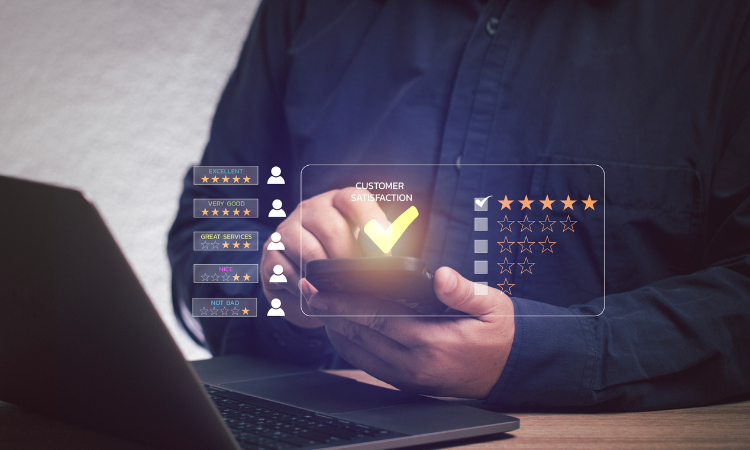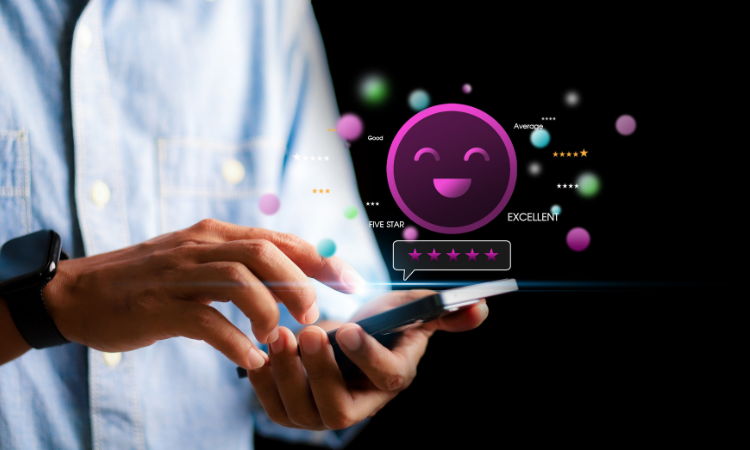A Quick Guide on how to create surveys that supercharge feedback
Let’s be honest.
Most surveys end up in the digital equivalent of a black hole. Why? Because they’re generic, impersonal, and more about the company’s agenda than the customer’s experience. We see it again and again in countless implementations. Response rates are always a struggle.
The good news: you don’t have to be “most surveys.”
With a little personalization (and a lot of customer empathy), your surveys can actually get answered — and give you insights you can use. The idea is to follow some rules and create some that work just for you.
Here’s how.
1. Don’t follow blind trends. Choose your survey type smartly.
We CX folks love buzzwords: NPS, CSAT, CES… but slapping them anywhere doesn’t make sense.
Thumb rule:
- Use CSAT for post-transactions. When someone buys a t-shirt, finishes a flight, or calls support, ask them about that experience.
- Use NPS for relationships. That’s when you want to measure overall loyalty and advocacy, not the delivery of a sandwich.
- Use CES when you want to measure effort. Like how easy it was to reset a password, check out of your app, or get an issue resolved with your agent.
But rules can bend.
If a simple Yes / No / Maybe works, use it. I usually say don’t rely on dichotomous surveys — but hey, if it gets you clear feedback, it’s a win.
The primary thing is not benchmarking.
It’s customer satisfaction. Focus on that first. Create your surveys around it. Think about what you would answer as a customer. When you get a service, a product delivered or speak to an agent — do you really care that the survey you receive is a CSAT or CES? Probably not.
The point is: match the question to the moment.
2. Do the hard work first. Integrate with your tools, and build your automation.
Nobody likes extra homework — but this one pays off.
Your surveys should never feel like an afterthought. That’s where integrations come in.
- Trigger a CSAT survey right after a support ticket closes in Zendesk or Freshdesk.
- Send an NPS survey after 90 days of product usage via HubSpot.
- Fire off an in-app CES survey the moment someone finishes a feature tour.
- Use Salesforce to trigger transactional surveys right after a deal closes or a case is resolved, so feedback flows directly into your CRM and your teams can act instantly.
Do the plumbing work first, and your surveys will run like magic later.
We know that getting IT bandwidth internally isn’t always possible. We work with a lot of companies that don't have the bandwidth for integrations right off the bat. And that's where we come in — we become your extended team and do the integrations for you. Build them exactly the way you like, so your surveys flow seamlessly and you're set up for success.
3. Personalize or be ignored.
This one’s non-negotiable.
A “How likely are you to recommend us?” is snooze-worthy right after a purchase. But—
✨ “Thanks for ordering the Wintery White Cotton Tee, Sonika! How was your experience?”
✨ “How easy was it to resolve your issue with Priya today?”
✨ “You just completed your first campaign in Zonka Feedback 🎉 How did that go?”
That’s the difference between ignore and respond.
Personalization tells your customer: We see you. We value your experience. And this question is about you, not us.

4. Forget your goal. Think about their journey.
Here’s a tough pill: your customers don’t care about your KPIs.
When creating surveys, we often start with the goal:
- “I want more NPS data.”
- “I need to track churn.”
- “I should show my management a fancy dashboard.” (Sorry, but we have heard this countless number of times.)
But customers care about their journey. The late pizza. The helpful agent. The glitchy checkout.
The trick? Design surveys that are seamlessly embedded in their journey.
Do that right, and — surprise! — you’ll actually get the insights you need for your goals anyway.
5. Don’t just ask. Let AI help you listen.
Here’s the secret: not every insight needs a question mark at the end.
With AI, you can analyze the conversations and signals you already have — without sending another survey, in some cases.
- Use AI sentiment analysis to understand how customers felt in their open-text comments, chats, or even support tickets.
- Spot themes and sub-themes automatically, so you know if complaints are about delivery delays, product defects, or pricing.
- Detect urgency and intent in feedback — so an “angry churn risk” doesn’t sit in your inbox for three days.
- Layer AI on top of survey data + operational data (from Salesforce, HubSpot, Zendesk, etc.), and you get a 360° view of the customer experience without overwhelming customers with too many forms.
Personalization is powerful. But personalization + AI-powered listening? That’s when you stop chasing answers and start anticipating them.
At Zonka Feedback, we don't just give you software — we partner as CX Consultants 🤝
When you work with us, we don’t simply hand over you a platform and wish you luck.
We step in as CX partners — helping you rethink strategy, optimize feedback flows, and unlock insights you didn’t even know you were missing (or didn’t know how to track).
Here are a few real examples from the field.
Breaking the “Rules” with Thumbs Up/Down
A fintech trading and investing platform we work with started sending simple thumbs up / down surveys post-service. 👍 / 👎
We debated a lot about whether they should do CSAT or CES for post ticket closure feedback, but in the end us and them both knew that getting to know if customers were ok with the ticket closure is more important than chasing a metric.
No CX manual would tell you to do this, but it worked.
Response rates went through the roof, and the insights were sharp and immediate, especially from users whose issues hadn’t been resolved — glitches, poor agent behavior, and more.
Smarter NPS Logic
A retail brand was showing all three follow-up questions (for promoters, passives, and detractors) for their NPS survey to everyone. No logic. No personalization.
We stepped in, redesigned their survey flow, and added smart follow-up logic. Advised them to pipe in the product purchased in the survey question so it's immediate recognition and more customers respond.
Within a week, their open-text response quality and completion rates shot up by 30%.
AI as a CX Shortcut, not a Buzzword
For an insurance company, we layered AI sentiment and theme detection on thousands of comments they collected monthly.
What used to take their CX team 4-5 full working days every week now happens in minutes.
Instead of reading through every comment, they review AI-surfaced insights like:
“Top negative themes this week: long wait time on calls, agent inefficiency.” “30% of comments flagged as urgent.” It changed how fast they acted, and frankly, it changed their CX ops culture.
And this is honestly what excites me the most as a co-founder. Because when we step in, we’re not just configuring tools.
We’re co-creating smarter CX systems — ones that combine strategy, personalization, automation, and AI to actually make feedback work for you.
Are you still figuring out your CX plan? Let's talk. Reach out to me at sonika@zonkafeedback.com or book a demo with us here.










